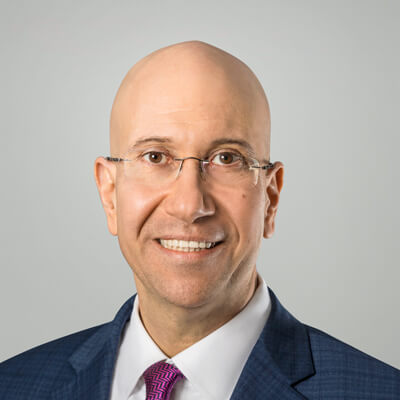Originally Published in

April 1, 2025
By Shimon Shkury, Ariel Property Advisors
Read The Article on Forbes
Originally Published in Forbes | April 1, 2025 | By Shimon Shkury at Ariel Property Advisors

New York City’s multifamily sales totaled $8.9 billion in 2024, a 14% increase in dollar volume from 2023, according to Ariel Property Advisors’ Multifamily Year in Review New York City 2024. Transactions rose 4% year-over-year to 1,107.

Citywide, predominantly free market buildings accounted for 63% of the multifamily dollar volume and 48% of the transaction volume in 2024, followed by predominantly rent stabilized assets, which accounted for 29% of the dollar volume and 47% of the transactions. The remaining sales were for buildings with regulatory agreements.

New York City’s multifamily market recorded $8.9 billion in sales in 2024, a 14% increase from 2023. Ariel Property Advisors
Manhattan’s multifamily volume reached $3.44 billion in 2024, an 11% annual increase, while Brooklyn’s surged to $3.48 billion, a 59% rise. This growth in both boroughs was largely driven by free market sales, which comprised 76% of the dollar volume in each market.
Attractive pricing was a key factor in free market sales in 2024, particularly in Manhattan. For example, Canvas Investment Partners acquired 210-220 E 22nd Street for $104.5 million, 15% below its 2015 sale price of $123 million. Other factors included strong fundamentals—Manhattan rents have risen over 20% in the past three years and nearly 4% in the last year alone because of the lack of supply—mortgage maturities and prime locations.
The free market multifamily sector in New York City continues to attract a diverse group of investors, including private individuals, institutional firms (like Carlyle, Stockbridge and Stonehenge) and international buyers. Lenders are also actively involved, providing capital for investments in this asset class. This broad pool of investors and readily available capital indicates strong interest and confidence in the free market multifamily market.
Conversely, the rent-stabilized multifamily sector in New York City remains under stress. Values for rent stabilized buildings have dropped around 35-60% below their 2017-2018 peak as owners continue to struggle under the weight of rising expenses combined with the 2019 Housing Stability and Tenant Protection Act, which capped rents.
My partner Victor Sozio, who was a recent guest on my Coffee & Cap Rates podcast, observed that many rent stabilized assets have extremely high leverage from loans that were placed either pre-HSTPA or in a market that had much lower interest rates. Now these assets are suffering from increased expenses, including rising insurance costs, and are also struggling with collections.
Rent stabilized sales in 2024 accounted for 53% of the Bronx’s multifamily dollar volume, which plummeted 59% year-over-year to $457.9 million; 51% of the multifamily dollar volume in Northern Manhattan, which saw a slight 7% year-over-year increase in volume to $674.5 million; and 72% of the dollar volume in Queens, which saw volume rise 13% year-over-year to $851.4 million.
According to Sozio, many owners of rent stabilized buildings are actually eager to sell and move on from their investments. However, they are in a difficult position. The financial performance of these properties isn't strong enough to cover their loans, preventing them from selling.
Sozio added that unless they get some sort of relief or cooperation from their lenders in many cases, they won't be able to transact. “Hopefully that's a trend that we're starting to see where lenders will be more pragmatic and open to these types of discussions to facilitate an exit even if it amounts to a short sale or some sort of modification or discounted payoff,” he said.
Discounted pricing is attracting buyers to the rent stabilized asset class. Investors in rent stabilized buildings continue to be primarily family offices and private individuals drawn by the drop in valuations and belief that the current regulations are unsustainable. With long-term strategies in mind, these buyers often acquire properties using all cash or minimal leverage, banking on potential regulatory changes in the future.
“You can make a pretty strong argument that it's a very intriguing buying opportunity in New York City today in this asset class in particular based on where it was historically, “ Sozio said. “We're seeing asking prices at 7% plus cap rates in many cases for these rent stabilized assets.”
Sozio noted that these cap rates are considerably higher than those recorded in Ariel’s partner offices in the GREA network, where properties in unregulated multifamily markets are achieving sub-5% cap rates, fueled by perceived growth.

Values for rent stabilized buildings in New York City have dropped around 35-60% below their 2017-2018 peak as owners continue to struggle under the weight of rising expenses combined with the 2019 Housing Stability and Tenant Protection Act (HSTPA), which capped rents. Ariel Property Advisors
In 2024, the affordable housing sector represented 8% of New York City's total multifamily dollar volume, or $713 million of the $8.9 billion sold last year. This is a significant decrease from 2023, when it accounted for 35% ($2.6 billion of $7.4 billion), largely due to the sale of major portfolios like the $1 billion Omni affordable housing platform.
Preservation remains a primary focus for mission-driven investors and operators, who continue to show strong interest in these assets, which offer risk-adjusted returns. Key transaction drivers include in-place assumable financing and potential collaboration between the city and state to preserve affordable housing. This could involve providing subsidies, extending benefits and incorporating Section 610 of the Private Housing Finance Law into regulatory agreements.
Sozio said the 610 amendment stems from Senate Bill 7235, a law passed at the end of 2022 and eventually rolled out in 2023 and 2024. The law allows any building that is encumbered by a regulatory agreement in New York State to obtain a 610 amendment, enabling owners to rent apartments to tenants with vouchers and collect those rents even if they are above the previous legal rent level, which is particularly valuable for owners with rent stabilized units. So, if the voucher standard is $2,600 for a one-bedroom apartment and the legal rent is $1,300, the owner can collect the higher rent.
“This is a meaningful piece of legislation sought after by some property owners to drive revenue higher while preserving affordability for the tenants because the rents are subsidized by the government,” Sozio said. “From a tenant’s perspective, they’re still paying the same percentage of their certified income, but it allows owners of these projects to get higher rents and address some of these increased expenses and improve their bottom line over time.”
A bright spot in the multifamily market space is that there is ample capital for well-positioned investments.
Matt Swerdlow, a Senior Director in Ariel’s Capital Services Group, explained, “Lenders have shown a strong preference for the free market asset class, which they view as a “risk off“ lending opportunity in New York City commercial real estate due to the potential for rent increases and rents that keep pace with rising taxes and insurance costs.”
Swerdlow added that the lending market for rent-stabilized assets, while smaller than pre-2019, is still available. “Several entities are active in this space, including banks without legacy balance sheet issues, government-sponsored enterprises like Fannie Mae and Freddie Mac, CMBS, and life companies (for sizable assets),” he said.
Additionally, private lenders, which have abundant capital seeking deployment, are now filling a role once held exclusively by banks. Investors are receptive to this private capital, seeking more flexible financing options that allow for early prepayment to capitalize on future appreciation, or refinancing into longer-term fixed rates when interest rates decline.

On his recent podcast, Ariel Property Advisors' President and Founder Shimon Shkury interviewed Victor Sozio, Founding Partner, and Matt Swerdlow, Senior Director, about trends in the multifamily market. Ariel Property Advisors
More information is available from Shimon Shkury at 212.544.9500 ext.11 or e-mail sshkury@arielpa.com.